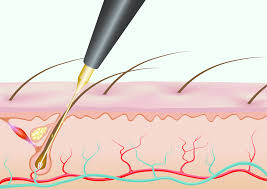ELECTROLYSIS PERMANENT HAIR REMOVAL
When it comes to hair removal, few treatments can truly stand the test of time—electrolysis is one of them. First introduced in 1875, this tried-and-tested method has evolved with modern technology to become more precise, more comfortable, and more effective than ever before.
While laser and IPL treatments are often favoured for speed, they offer only permanent reduction. Electrolysis, on the other hand, remains the only medically approved method of permanent hair removal—regardless of your hair or skin colour.
If you’re ready to say goodbye to unwanted hair for good, electrolysis is the gold standard. It doesn’t just reduce growth—it ends it.
Carrina has gathered answers to the most common questions to help you make an informed decision. If there’s anything else you’d like to know, you’re warmly invited to get in touch via phone or email, alternatively consultations are available to book online.

